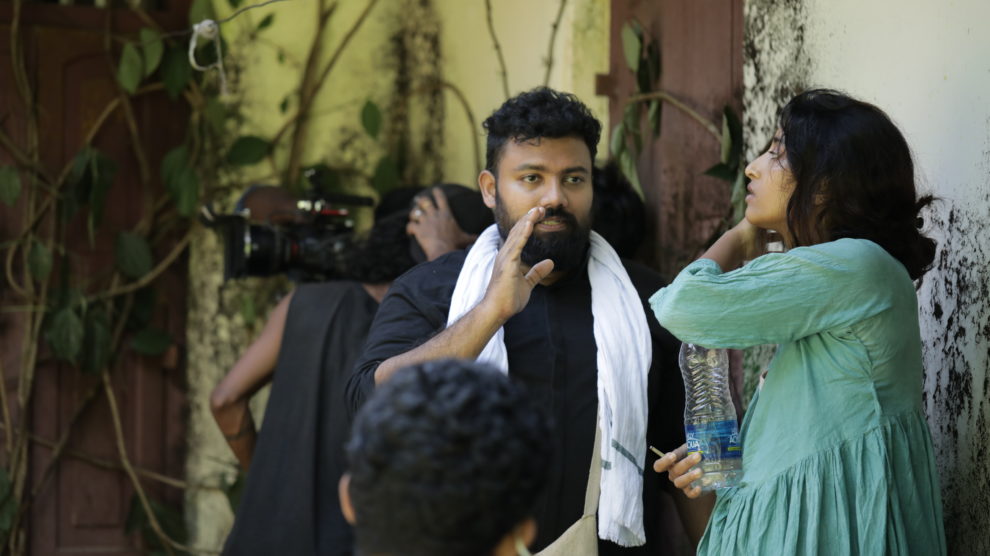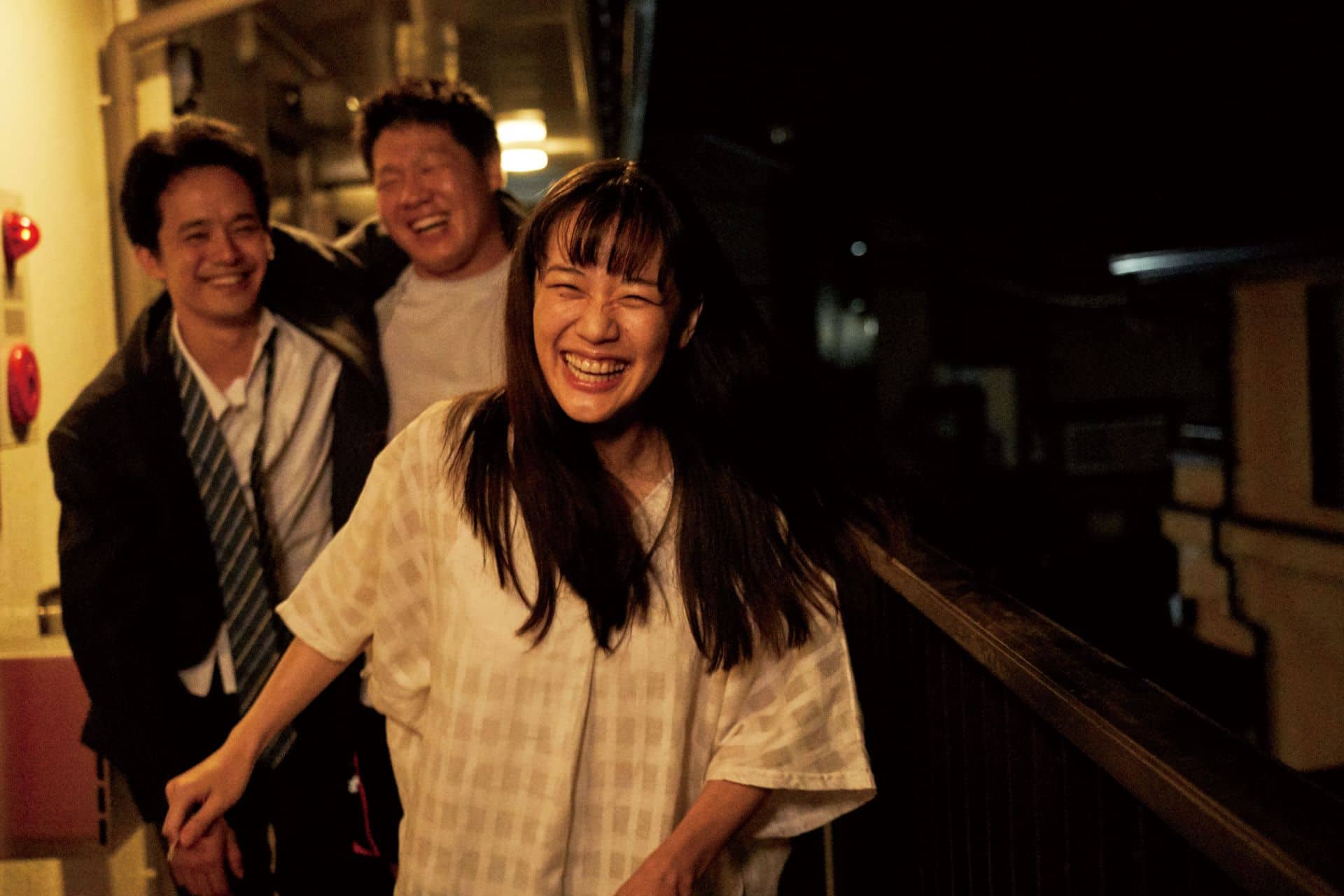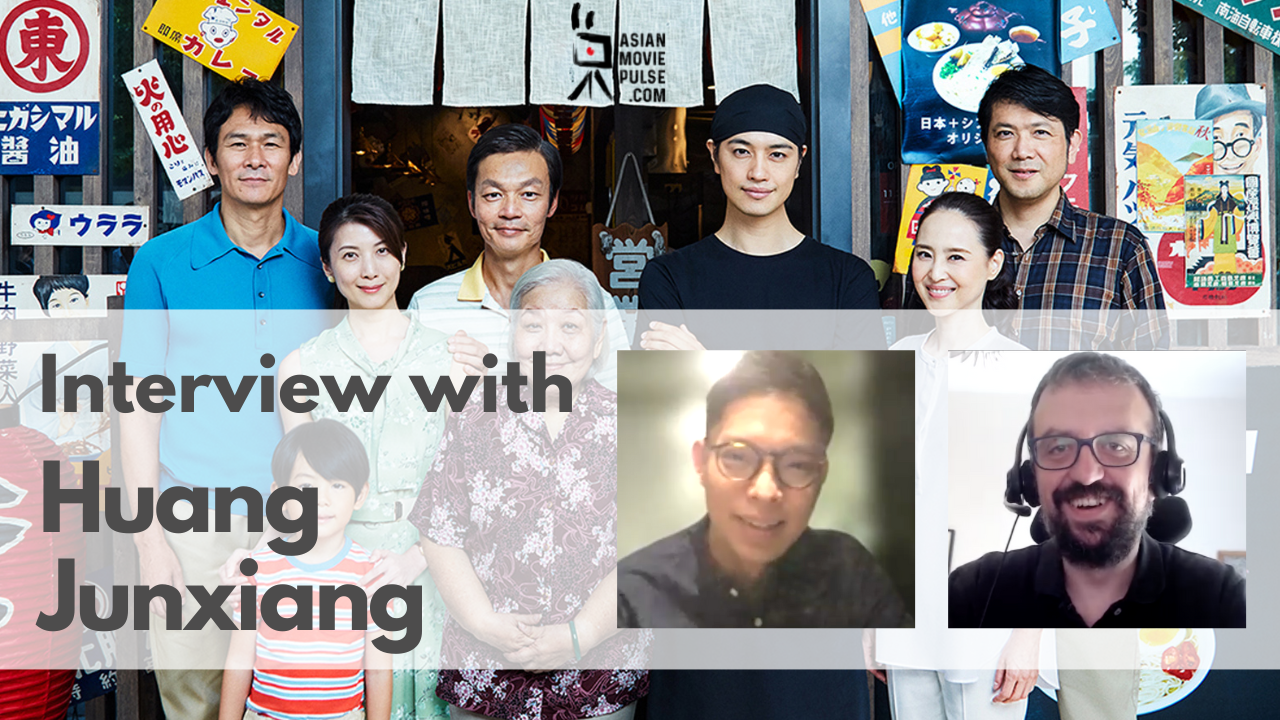Krishnendu Kalesh is an independent filmmaker and media professional. He has been working in mixed media platforms for more than 10 years, primarily in India and Melbourne, Australia. Kalesh graduated in Computer Science, has a post graduate degree in Media Production and a degree in Graphic Design. Since 2003, he has held many roles in the field of filmmaking, multimedia design and photography. Kalesh specialises in filmmaking, documentary, video production, graphic design, photography, film workshops and screenwriting. He directed his neo-noir short film Karinchathan in 2017, which won Best Film & Director at the FEFKA film awards.
On the occasion of feature film debut, “Prappeda”/”Hawk's Muffin”, world premiere at IFFR 2022, we speak with him about his background, the inspiration and the title of the movie, his unusual approach, the acting and the cinematography, Malayalam cinema and other topics.
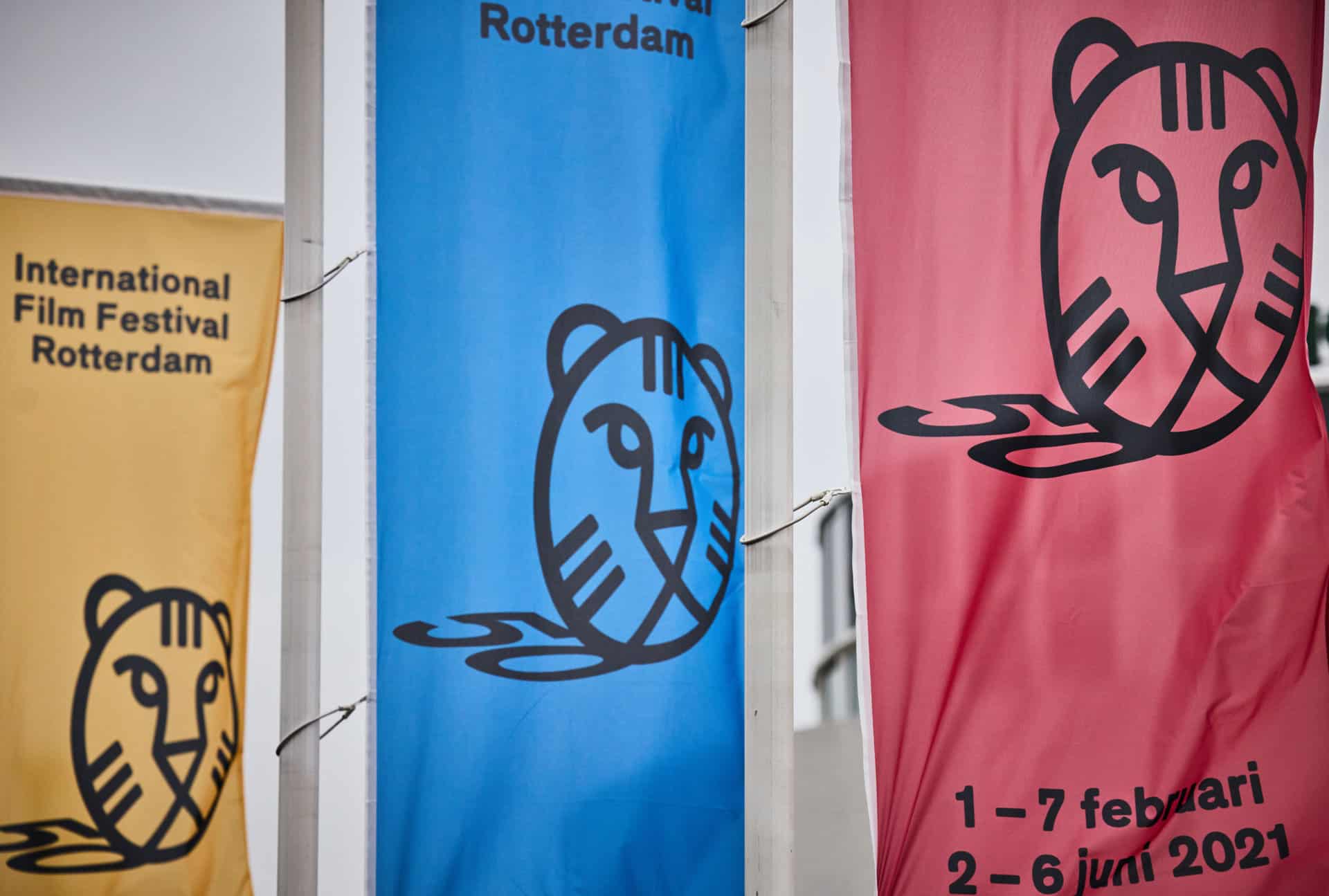
You have a background in media production and graphic design. In what ways have these aspects affected your way of filmmaking?
Such skills have helped me in terms of developing a visual language, approach and form-building using tools of filmmaking. They also provide aesthetic and research insights to a filmmaker. One reason for my inclusion of multiple themes to a single movie and the willingness to perform with it, is because of the assortment as well as comprehend behavior that media production and graphic design carry. Both are image, sound, text and information carrying mediums with montage style-code. That is also new media. I tried to incorporate them with cinematic language, which creates, at least in my opinion, another grammar.
What was the inspiration behind the story of “Hawk's Muffin”, and can you give us some details about the title?
The movie was totally a product of the situation, i.e., the first wave of pandemic. Where only the fear factor was all over and people were totally isolated, locked themselves up and controlled, by trusting the information that a machinery provides. So I imagined a larger conspiracy theory and thus planned to tell a story of a dystopian future which is the product of an organizational strategy during a pandemic infused world, executed by the system – corporate nexus. But this whole idea lasts only for the first few minutes of the movie, and the story runs around Ruby, the protagonist and her bizarre encounters in the time span of a week. Many themes are unexplained but visual clues are provided. Brainstorming to execution, the movie happened within 2 months, and we created it with only a 20 person crew and shot for 18 days in an independent method, all due to the lockdown situation. But, I believe limitation boosts creativity and spirit.
The title “Hawk's Muffin” has multiple meanings. “Hawk” is a common synonym to war and war planes, especially due to a hawk's predatory and surveilling attitude. “Muffin” can be either referred to hawk's food or hawk's crap (visually symbolic to a plane dropping a bomb). The concept comes in a circle if you combine the English title with its Malayalam (native) title, which is called “Prappeda”. It's not a translation, “Prappeda” can be read either as a female dove or a rumbling dove. Hawk and dove are two divergent images of war and you can keep on reviewing the odds of both titles, their meanings and connections. If you watch the movie, such a circular discourse pattern and multiple senses even set the form of the whole narrative. Even Rajesh Madhavan's character holds a tool which moves in a circle.
The approach of the film is rather unusual, combining sci-fi elements with art-house and experimental aspects. Why did you choose this approach and not a more generic one, for example?
As I said, the movie was a product of a worldly situation, I see that the world order has changed due to the pandemic and its horrifying initial period. That is not generic, and anything I can think of has not a particular form or previous models to adapt rather than an outthinking. But to make such movie is not very applicable here, thanks to my friend-producer-actor (Xavier character) Mr. Jayanarayan Thulasidas who stood with me without a doubt, which added on to my creative freedom.
The main storyline is just like any fairy tale narrative, or a tragic fairy tale. It's a mashup of the “Once upon a time…” and “what if…” hypothesis. Sci-fi elements are incidental to the storyline and its setting, the narrative is bent more towards the fantasy genre with an avant-garde tone.
Cinematic time for a story teller is very limited, and since I'm trying out many themes and ideas in a single movie, I left them as suggestions only. That in turn makes the movie non-generic, and often disturbs the viewer waiting to comprehend everything. But I left audio-visual clues which connect everything, which might need multiple viewing, which I guess is the best possibility of cinema a filmmaker should use while communicating with the viewer, rather than spoon-feeding and confirming information. The narrative should unveil through the mind of the viewer.
In terms of approach, my first decision was to incorporate some experimental elements to the film and adapt a hybrid style. Hence, rather than shooting over a conventionally written script, I moved on with a synopsis, quite a detailed synopsis. Its paragraph structure set the approach method towards the scenes. I shot in a very classical style and incorporated the dynamism during editing and post-production. It has a mainstream way towards certain scenes while some are treated surreally or even hyper really. Symbolism and historic references were applied constantly. Such a mix-bag approach in fact gels with the narrative tone and it slowly sets the form. I'm very serious about the structure and form of a movie rather than its narrative flexibility, it's a space where you can keep experimenting with cinematic language.
Moreover, the protagonist's mind and reasoning are inconsistent, her only driving force is her curiosity, and they are the two deeds I focused on while approaching this movie, both narratively and technically.
Was it difficult for the actors to adapt? In general, how was your cooperation with them, particularly Ketaki Narayan and Rajesh Madhavan? Could you give us some details about the casting process?
My actors are part of the character development process also, I often discuss with them to develop the possibilities and even dialogue construction. Every character except Ketaki and Rajesh's had a proper framework.
Ketaki was referred to me by my cinematographer Manesh Madhavan. Her multi-etnic look was fitting for the unspecified site of the story. Her modelling background was an add on towards the physicality of the character. Ketaki's character Ruby was supposed to shadow her biotic urge, primitive curiosity, childish greed etc. without any social awareness. After reading the synopsis and a few movie references, she was very keen to follow some methods, but before shooting, we totally altered the methods. The shoot setup was very limited for an actor to adapt, but she was very openhearted towards the condition and ready to push herself. She started responding to the mood of the setting (dystopian house) and situations of the story. Music was played on the set constantly to sustain the mood. Improvisations and inputs were given by her.
Rajesh Madhavan, on the other hand, has a strong theatre background. His character is uncanny or even a humanoid with no sense of emotion rather than playfulness. His physical frame was my first catching point during casting. We had no references rather than laying the character as “unidentified”. The only lead I gave him is that of a ‘vibrating toy meets a lonely girl'. We had few Dali references in the imageries, so we planned to adapt a young Dali look for him. Then I wanted an unusual movement pattern for him, resembling old newsreel frame-rates. So he added a Buster Keaton'ish movement design to the character. He also conveyed an unconditional calmness like Buddha at times. All such developments were fun to try upon and he delivered it with method and charm.
Among the other cast, Jayanarayan (Xavier) and Nithin George (Thumban) are experienced actors from TV and cinema. They are my good friends also. Xavier's character had a proper arc with inner conflicts. Thumban's fraudulent nature was delivered by Nithin with ease. As each scene progressed, Nithin's character was stepping up to domination very confidently and he worked upon designing his dialogues too. Mano Jose (Shepherd) is a popular Radio Jockey and his verbal fluidity was adapted to the character with a comic tone. Mother (Neena Kurup) and Granddad (Sreekanth) joined the set at the very last minute due to lockdown complications and they performed beautifully within that span, without even knowing the whole story idea. The worker boys were a great discovery as they were very real and believable. They were selected from the locality.
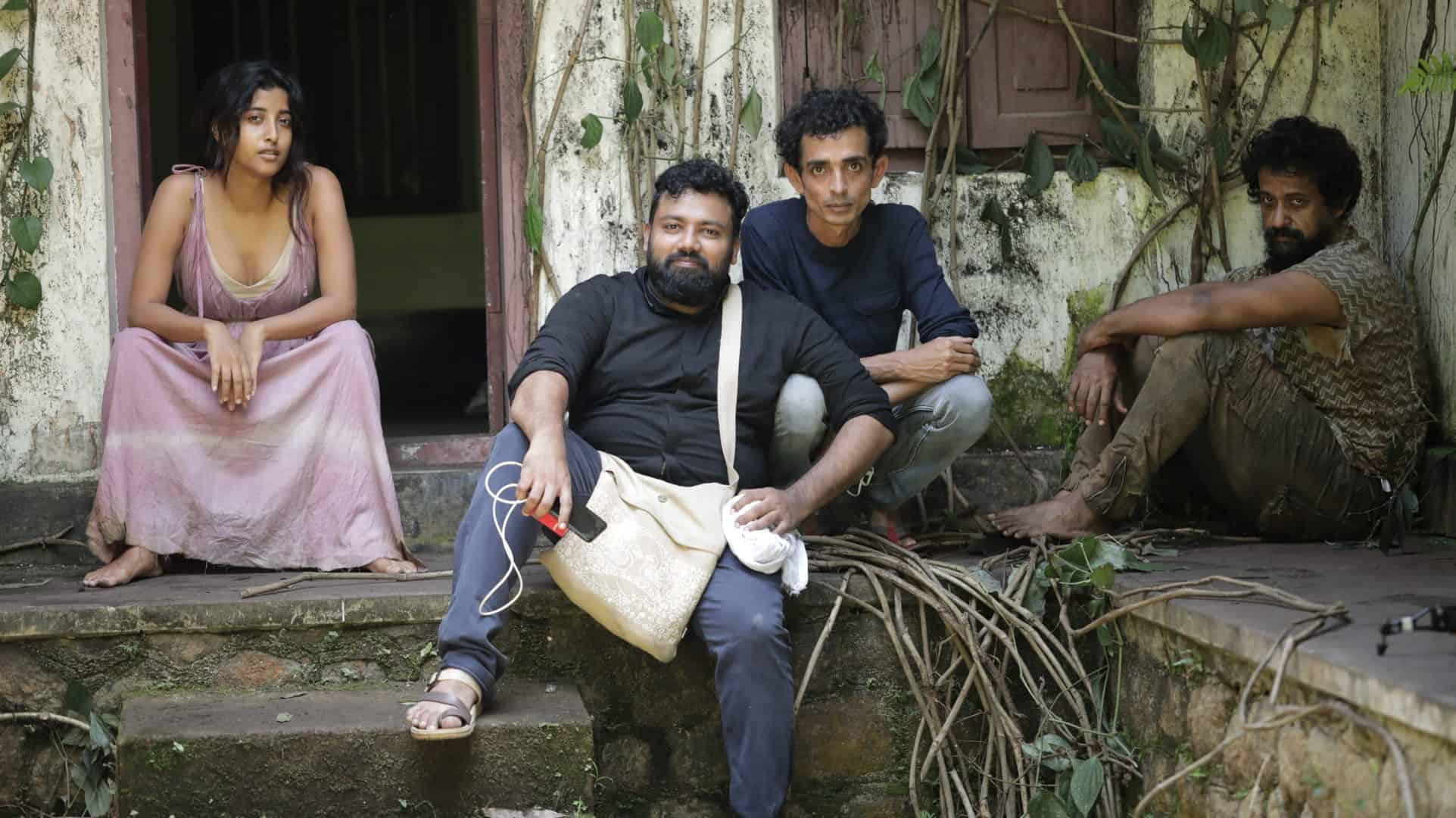
The comments presented seem to focus on racism particularly regarding refugees, the concept of owning land and the issues it can create, war, ecology, violence, and human nature. What is your opinion on these subjects? Do you feel they are connected in some way?
I purposefully included such an array of themes in the layers as I believe that they are all connected to each other. We are actually roving through them on an everyday basis, in our life choices, unconsciously. If we break them down, we will get more socio-political schemes that we all agreed upon. We always walk through someone else's sufferings.
War is often considered by the state as a solution to a problem, which itself is the biggest problem that the world is witnessing over centuries, in different forms. War is an institutional product. The enemy and the hatred are not organic but manufactured. For performing such schemes, we developed separation tactics. Everything is for one reason; acquiring resources and taking control over it. It's a working relationship between corporates and the state. It's very simple to evaluate but sadly a never resolved phenomena even in the modern world.
A moment of self-awareness can stop someone from fighting, but it's never appreciated by a state. That's one reason why I placed a protagonist with no sense of values and ethics, only her bodily needs are driving her. If those needs were satisfied, she could have been enlightened, but denying it made her furious. Even if you are the only inherent of a large ‘race-purified' home, you cannot live in peace, nature will take over you. The house in the movie was presented as a microbe or symbol of larger international border conflicts.
Being brought up in a fascist home, rejecting a world-view which was offered by an unconditional artist, Ruby chooses victory through violence and ends up a refugee. She had empathy but didn't know how to use it for humankind. She's a confused and repressed youth who was denied or not practiced from a larger world perspective. A usual representative of any war mongering state.
Sadly, we use a hawk's point of view for surveillance, not to develop the idea of a united world. It's the duty of an artist to remind it often.

How was your cooperation with Manesh Madhavan regarding the cinematography? In general, what was your purpose in the visual aspect of the movie? Could you also give us some more details about the location the film was shot?
Manesh Madhavan is one of a kind cinematographer who excels both in studio and independent productions, and he practices it consequently. He has a great sense of creating visuals that carries both aesthetic quality and narrative consistency, that too within any kind of setup. We shared the same vision from the very developing time of the idea itself. He brings excellent classic block frames with subject importance. The idea of a different dystopian future which often carries classic Victorian and native ethnic look with occasional contemporary and future inclusions was well received and delivered by him. Many sequences were treated in different lighting, no light and movement styles, and he served a layer of obscure uniformity through them with his skills.
The movie has a surveilling point of view, unusual subject plays with an observer's viewpoint and subjective as well as the subconscious perspective of the protagonist. Visuals are also a part of the cryptic narrative pattern the movie carries. Some scenes clearly provide us information and the crucial information was conveyed through visual and sound design only. Most of the scenes are chapters with an opening and closure of a situation.
Many symbols are used as properties, and some scenes themselves are symbols or clues of a larger hidden narrative. Roots and mirrors are used as motifs, and a broken mirror is a symbol of character consciousness as well as hints the narrative from. There's a 3-minute-long single take which is designed for the mirror's image and shifts the focus with character consciousness. The whole transformation of the protagonist is happening through mirrors; through them she identifies her strength. In one of the last scenes, she looks at a broken mirror and turns and looks at the viewer for a better view of her determination.
The location was a vast private rubber plantation field located in the mid part of Kerala, India. The ethnic house, oven house and even the waterfall are private properties of that land. Rubber plantations carry a long history of migration, religious establishments and economy in Kerala. They have tough stories to tell. Such a setting turned out to be the fitting place to tell our story, it contributed to our different dystopia.

What is your opinion of the Malayalam movie industry at the moment?
The Malayalam movie industry creates many wonderful realist dramas with great acting moments, within budgets. Lower demography and different sensibilities used to restrict the business once. But it turns out to be the only industry in India which produced numerous high-quality films during the pandemic. Consequently, their OTT acceptance widened the spectrum of audience for Malayalam cinema across India, like never before. Many films are being made now, the major confusion is about the platforms they are going to be distributed and stay. Theatres are struggling due to covid restrictions. Quality of popular cinema is thinning as some are trying to satisfy a larger outside audience with extreme sensibilities by adapting goofy, washed out cinema language. Like the masters concerned, when cinema becomes ‘contents' which are controlled by algorithms, only prototype films will follow.
Are you working on anything new at the moment?
My previous short-film “Karinchathan” and debut feature “Hawk's Muffin” share many identical elements, both narrative-wise and technically. So one is short-fiction, the other is, as you mentioned, a non-generic film, and I wanted to make a popular film of the context and package as a trilogy. I'm a huge fan of genre centric films with thrills. I'm working on such scripts. One is a dark investigation thriller and the other is an action film. Though they are films of popular appeal, I try to include the idea of humanity through the characters and their philosophy. I'm also waiting for some foreign co-production to establish some larger subjects.


